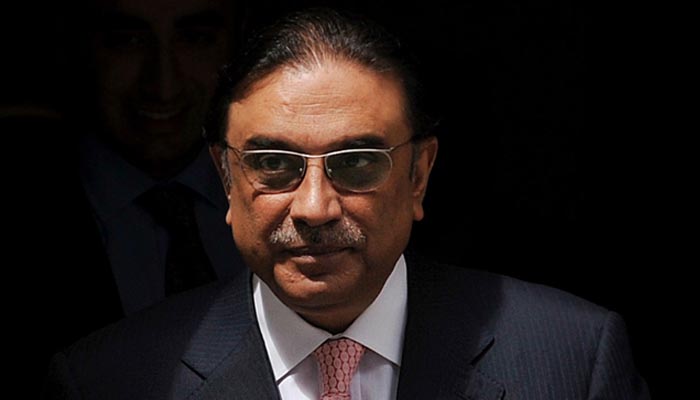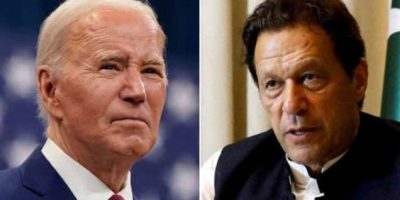Future govt: PPP holds the trump card

ISLAMABAD: (DNA) – A variety of likely scenarios and conspiracy theories are under debate at every level about the results of the fiercely fought July 25 elections. Who will make it to the office of the prime minister is the bottom-line of the discourse.
On the face of it, there are three contenders for the coveted slot — Shahbaz Sharif, Imran Khan and Asif Ali Zardari/Bilawal. But there’s also a fourth invisible unnamed, unidentified challenger — a dark horse or a Sanjrani or a Bizenjo — who may throw all of the chief aspirants out of the stadium.
One assessment being forcefully bandied about by the Pakistan Tehreek-e-Insaf (PTI) and its apparent supporters and backers is that Imran Khan will surely carry the day and that an environment has been calculatedly created in the build-up to the elections that he is the man who will be the next primeminister.
This lot holds and projects a sweeping view that the PTI will come out as the single largest party in it. But when it comes to specifying details and identifying the seats that Imran Khan will win, such elements are found wanting in specifics.
Generally, it is known before every election because of an aura deliberately created by the interested quarters as to which political party will be winning. This time, the PTI is being painted so by inducting a large number of electables and providing it with lots of other facilities it is enjoying. But whenever such an impression was created about a party in the past, its rivals had never been as powerful as they are now with all independent public surveys and opinion polls putting chief antagonist ahead of it. This is the striking difference, and it is not a small one.
The second possible scenario being discussed is that the PTI will single-handed be short of the magic 51pc majority in the National Assembly. The next question is how it will make up the deficiency. In case of a major shortfall its prospects to clinch the top slot will dampen.
A popular argument that is being advanced is that the support of the Pakistan People’s Party (PPP) may be available to take care of any shortage, as the two parties had rarely joined hands in the election of Sadiq Sanjrani as the Senate chairman. Even if the PPP decides to side with or stay away from Imran Khan, the lawmakers of the Balochistan Awami Party (BAP), the tribal areas, Muttahida Qaumi Movement-Pakistan (MQM-P), Pakistan Sarzameen Party (PSP), Grand Democratic Alliance of Sindh and independents will be made to back the PTI. All these numbers will cobble together an alliance to land in a position to form government at the federal level.
However, the next question will be who will be the prime minister if the PTI fails to emerge as the single largest party. Neither the PPP nor the BAP or any other group will support Imran Khan without demanding their own pound of flesh, which may not be trivial. Accepting the PTI chairman as its prime minister will, of course, be a behemoth bitter pillar that the PPP may not readily swallow. Therefore, in case of a deeply split mandate, the chances will be that a candidate mutually acceptable to all likely coalition partners may be searched and agreed upon. In such eventuality, Imran Khan will stand eased out. In any case, if such a coalition is ultimately worked out, it will be the weakest governing alliance, and it will always be an uphill task to keep it together and going when acrimony rather confrontation between the PTI and other partners will crop up. Another possible scenario is that the Pakistan Muslim League-Nawaz (PML-N) secures majority or becomes the single largest party in the Lower House of Parliament.
Then, given the prevailing environment in which it has been cornered and harassed, it may not be allowed, according to the popular perception, to form federal government precisely in the same manner as the Senate chairmanship was snatched from it due to the collaboration between the PPP and PTI. Whatever the situation will prevail, the National Party of Hasil Bizenjo, Pakhtunkhwa Milli Awami Party of Mehmood Achakzai and Jamiat Ulema-e- Islam-Fazl will stand with the PML-N in government or opposition. Together, they are expected to bag nearly a dozen and a half federal seats from Balochistan and Khyber Pakhtunkhwa (KP) apart from their gains in the two provincial assemblies. Weeks before the election outcome, it can be safely assumed that the PPP will hold the trump card in establishing the future government. If it will break bread with the PTI, both will benefit and defeat their rival, primarily the PML-N. And if the PPP joins hands with the PML-N, they will rout their principal adversary.
Thus, the PPP, which is expected to trail behind the PML-N and PTI in the number game of national seats, will enjoy an advantageous position. It may turn out to be the real king maker. However, none of these three parties can be wished away and everyone will have a key role in the next parliament. There is a strong possibility that if the PML-N was not in a position to form government, it may offer the position of the prime minister to the PPP, which will be a huge incentive. Rejection of such offer by the PPP will be a monumental decision. Another important element of the ongoing debate is as to which party will get the Punjab government. If supposing for a moment Imran Khan or someone else opposed to the Sharif brothers becomes prime minister and the PML-N is successful in installing its government in Punjab, the frightening repeat of excessive tussles witnessed during eighties and nineties will strike Pakistan with vengeance. Not only the PML-N but the PTI also equally dreams of getting the Punjab government because without it will always be extremely hurting. The PPP hardly hopes for any major gains in this provincial assembly.
Regardless of the expectations and permutations of the political parties, the PML-N is sure that in a worst case scenario, in which it is handicapped to have its government at the federal level, it will be successful to secure it in Punjab because of its numerical strength. A scary picture, hinting at a nightmare of lingering political instability and uncertainty, may overwhelm the horizon if the elections produce the widely predicted hung parliament.
But yet another scenario is that the polls may spawn surprise results, especially in Punjab and KP due to the unprecedented political polarisation that was intensified after ousted Prime Minister Nawaz Sharif was disqualified by the Supreme Court, his subsequent trials and his return to Pakistan followed by instant imprisonment. The situation will become unmanageable and uncontrollable if voters gave surprise results. Unexpected outcome will make all the envisaged plans upside down. While discussing the possibility of surprise results, the material change of situation in different spheres in 2018 compared to that of 2013 may have to be kept in view.
After the exit of the PPP government in 2013 on completion of its five-year tenure, Pakistan was faced with three Himalayan problems – loadshedding, terrorism and worst law and order and mafia rule in Karachi. Among them, the power outages had stood number one, which was very agonising for the general public. What are the facts about these gigantic issues on the eve of the upcoming elections are before everybody and need no elaboration? How far this sweeping change will weigh upon the minds of the electorate while casting their votes will be seen on July 25?
Related News

US lawmakers urge President Biden to ‘advocate for immediate release of Imran Khan’
WASHINGTON/ISLAMABAD, NOV 16: In a major development, dozens of US lawmakers have called on PresidentRead More

Chairman PRCS meets President Azerbaijan Red Crescent Society in Baku
BAKU, /DNA/ – The Chairman of the Pakistan Red Crescent Society (PRCS), Sardar Shahid AhmedRead More


Comments are Closed